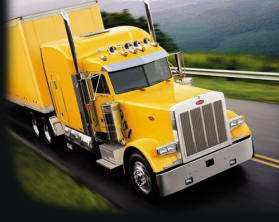Road Atlas
Topic 19381 | Page 1
Wait until you get your own truck. When you are in to test out and upgrade, good chance the company will have them to sell to you.
I would say every 2-3 years. Buy a new atlas. Every year is kinda pointless. There are changes, but usually not that drastic.

Some companies will give you one. Mine gave us one in the final week of orientation/training.

Thanks how often do you use your road atlas? Is it just to double check GPS to make sure the GPS is right?

Jordan asks:
Thanks how often do you use your road atlas? Is it just to double check GPS to make sure the GPS is right?
As a backup on an as-needed basis and to supplement GPS with a route I am not familiar with.
Thanks how often do you use your road atlas? Is it just to double check GPS to make sure the GPS is right?
It also has a huge reference section where you can look up all sorts of stuff including low bridge locations, maximum axle weights for each state, maximum kingpin to tandem length for each state, and restricted routes from coast to coast. There's a whole lot more too.
And besides, everything electronic breaks at some point and GPS systems are indeed wrong sometimes. So it's really something you'll want to have.
Tandem:
Tandem Axles
A set of axles spaced close together, legally defined as more than 40 and less than 96 inches apart by the USDOT. Drivers tend to refer to the tandem axles on their trailer as just "tandems". You might hear a driver say, "I'm 400 pounds overweight on my tandems", referring to his trailer tandems, not his tractor tandems. Tractor tandems are generally just referred to as "drives" which is short for "drive axles".

G-Town put it best. I drive familiar routes all the time, but anytime I'm on a road I'm not familiar with, especially US Highways and state roads, I'm opening my atlas to look for restrictions and low bridges. You never know when you might need to make your own detour because of an accident, construction, or weather. I use my GPS as a heads up for intersections or turns, not for routing or blind navigation.
Even routes you are familiar with...you don't always know to exact exit number. And when needing to know where weigh stations are its much easier I think than Google.
I usually open it to the correct page and put it on the passenger seat while I'm driving. That way if I have a question, pulling off the road to a rest stop or parking lot to check is quick and back to rolling.
An atlas should be your primary, especially on trips where the route may be unfamiliar. A GPS is nice, but you should never rely solely on a GPS. They are simply another tool that may be helpful, but can often be wrong.

Adding to Susan's advice/suggestion;
Whenever I am dispatched on a load requiring navigation through an unfamiliar route, I always use the Atlas to "eyeball" the roads required to drive from point A to point B. It provides a far better, overall picture of the route. I can "see" where I am going and can determine at a glance if I am able to take "truck-safe" roads.
At least for me, this is especially important when driving from my first store stop to the second stop, and so forth and so-on. Simply put, routing from the Walmart DC (where I start my day) to the first store delivery is fairly static, well documented/custom programmed into the Navi-Go GPS. So unless there is an unforeseen detour; the route from the DC and then returning from the last stop back to the DC is typically uneventful, with no surprises. However, navigation from the first stop to the second is when the Atlas is necessary. It's required because more than half the time secondary and local routes are required between stops. I do not trust any GPS in situations like this; with potentially narrow roads, residential areas, low bridges and very tight turns. With 100+ stores in my territory, the route combinations are too numerous to memorize, and many times are not repeated due to the nature of JIT retail grocery delivery. So my Atlas is well worn and has saved me hours of aggravation and guesswork. All about preparation; an ounce of prevention is worth a pound of cure.
The common theme here; do not rely solely on electronics for navigational purposes and trip-planning. Believe it.
New Reply:
New! Check out our help videos for a better understanding of our forum features

















Preview:








 TT On Facebook
TT On Facebook
As a new driver that just got his cdl should I get a road atlas before I go on a trainers truck or should I wait until I get my own truck? Do you have to keep upgrading the road atlas each year or Just wait a year or two before getting a new one? I am thinking about getting the rand McNally Motor carrier atlas 2018 was told this was the best atlas to get not sure if it is or not.
CDL:
Commercial Driver's License (CDL)
A CDL is required to drive any of the following vehicles: